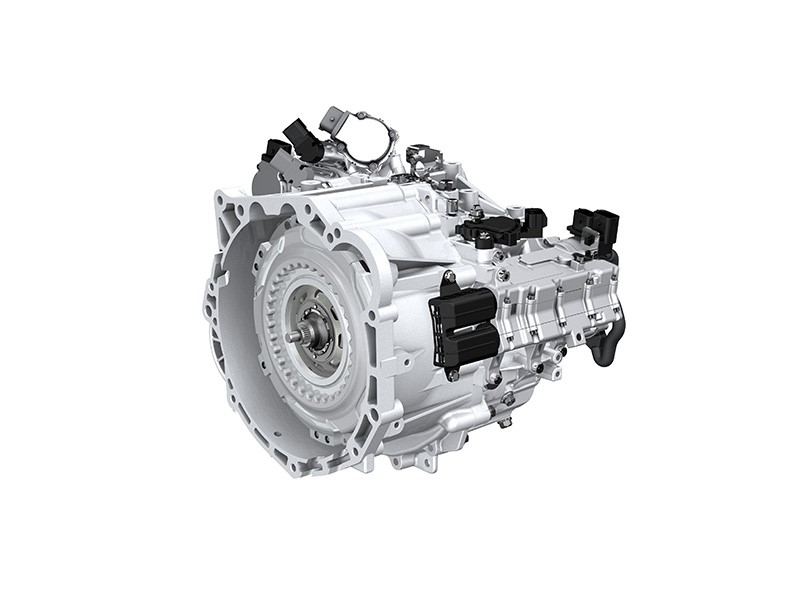Kia has announced application of the all-new seven-speed dual-clutch transmission (DCT) to a production model for the first time, the new Kia cee'd GT Line – which makes its global debut at the 85th Salon International de l'Automobile in Geneva on 3 March 2015.
Production debut – the new Kia cee'd GT Line
The new DCT will be paired with the cee'd GT Line's 133 ps 1.6-litre CRDi diesel engine. Capable of handling larger torque outputs than Kia's existing six-speed torque converter automatic (up to 300 Nm), the DCT's fast-shifting nature is ideally suited to the new cee'd GT Line's sporty image.
Drivers will benefit from faster gear changes than a traditional torque converter automatic transmission, as well as lower running costs. It is anticipated that the new DCT will offer lower emissions and higher fuel economy, pending European homologation tests later in 2015. It will be made available on a wider range of Kia models in the future.
Developed in-house for greater fuel economy and acceleration
The new transmission is the first of its type from the brand, and has been developed in-house by Kia's research and development teams at its Namyang, Korea R&D centre. More fuel efficient than Kia's existing six-speed automatic transmission, the new DCT has been engineered with low fuel consumption and a sporty driving feel when in manual mode, and with comfort and smoothness when left in automatic mode.
Throughout its development, Kia's R&D teams targeted a three to five per cent improvement in acceleration (0 to 100 kph) and five to seven per cent improvement to fuel efficiency, depending on model.
Innovative hollow double-gear input shaft allows quick shifts
The DCT is made up of two dry clutches, each fitted with electric motor-driven clutch actuator to improve responsiveness, and an innovative hollow double-gear input shaft. The hollow shaft itself allows the system to quickly engage even gears, while a solid shaft that runs through the middle operates odd gears. This crossed gear shifting enables continuous power delivery and more efficient packaging, two development cornerstones for the engineering teams behind the project.
The hollow shaft mechanism lets the DCT operate sequentially, the car anticipating the next gear that the driver is likely to need next under acceleration or braking, or jump immediately to any of its seven forward gears (and reverse). This is particularly useful under kickdown or heavy braking, allowing the driver to remain in control of the vehicle at all times.
The continuous power delivery of the DCT minimises the loss of torque and forward motion by the powertrain during gear shifts, resulting in more decisive acceleration and a smoother drive. This contributes towards the transmission's boost to performance in all road conditions in its first application in the cee'd GT Line.
Combined with an increase in power from 128 to 133 ps, the DCT's seven gears allow the GT Line's diesel engine to operate at its most efficient speeds at all times. With the engine's torque increased from 265 to 285 Nm, the new DCT is engineered to effectively manage outputs of up to 300 Nm, achieving a better balance between the engine's improved, more effortless performance and potential for greater fuel economy.
Reduction of noise, vibration and harshness (NVH) has also been a focus for the team behind the DCT's development, with an external damper ensuring a higher level of refinement for the new transmission.
After the cee'd GT Line, which will go on sale across Europe in Q4 2015, the new seven-speed DCT will be made available on a range of other Kia models.
Production debut – the new Kia cee'd GT Line
The new DCT will be paired with the cee'd GT Line's 133 ps 1.6-litre CRDi diesel engine. Capable of handling larger torque outputs than Kia's existing six-speed torque converter automatic (up to 300 Nm), the DCT's fast-shifting nature is ideally suited to the new cee'd GT Line's sporty image.
Drivers will benefit from faster gear changes than a traditional torque converter automatic transmission, as well as lower running costs. It is anticipated that the new DCT will offer lower emissions and higher fuel economy, pending European homologation tests later in 2015. It will be made available on a wider range of Kia models in the future.
Developed in-house for greater fuel economy and acceleration
The new transmission is the first of its type from the brand, and has been developed in-house by Kia's research and development teams at its Namyang, Korea R&D centre. More fuel efficient than Kia's existing six-speed automatic transmission, the new DCT has been engineered with low fuel consumption and a sporty driving feel when in manual mode, and with comfort and smoothness when left in automatic mode.
Throughout its development, Kia's R&D teams targeted a three to five per cent improvement in acceleration (0 to 100 kph) and five to seven per cent improvement to fuel efficiency, depending on model.
Innovative hollow double-gear input shaft allows quick shifts
The DCT is made up of two dry clutches, each fitted with electric motor-driven clutch actuator to improve responsiveness, and an innovative hollow double-gear input shaft. The hollow shaft itself allows the system to quickly engage even gears, while a solid shaft that runs through the middle operates odd gears. This crossed gear shifting enables continuous power delivery and more efficient packaging, two development cornerstones for the engineering teams behind the project.
The hollow shaft mechanism lets the DCT operate sequentially, the car anticipating the next gear that the driver is likely to need next under acceleration or braking, or jump immediately to any of its seven forward gears (and reverse). This is particularly useful under kickdown or heavy braking, allowing the driver to remain in control of the vehicle at all times.
The continuous power delivery of the DCT minimises the loss of torque and forward motion by the powertrain during gear shifts, resulting in more decisive acceleration and a smoother drive. This contributes towards the transmission's boost to performance in all road conditions in its first application in the cee'd GT Line.
Combined with an increase in power from 128 to 133 ps, the DCT's seven gears allow the GT Line's diesel engine to operate at its most efficient speeds at all times. With the engine's torque increased from 265 to 285 Nm, the new DCT is engineered to effectively manage outputs of up to 300 Nm, achieving a better balance between the engine's improved, more effortless performance and potential for greater fuel economy.
Reduction of noise, vibration and harshness (NVH) has also been a focus for the team behind the DCT's development, with an external damper ensuring a higher level of refinement for the new transmission.
After the cee'd GT Line, which will go on sale across Europe in Q4 2015, the new seven-speed DCT will be made available on a range of other Kia models.

